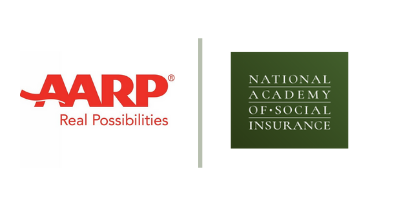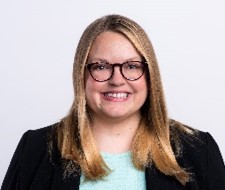Jean Accius, Senior Vice President, AARP Thought Leadership and International Affairs
Julia Elrod, Senior Program Analyst, AARP Thought Leadership and International Affairs

As the year draws to a close, our nation is still grappling with a trilogy of crises: an explosive increase in COVID-19 cases, deepening economic instability that has people waiting hours in line at food banks, and ongoing geographic and racial disparities that disenfranchise the most vulnerable among us. In response to these serious issues, AARP has been working to respond over the last several months through our Building Equity series with the Social Innovation Summit. We have engaged global thought leaders across sectors, developed thoughtful analysis, and worked to identify innovative solutions to meet this moment and promote meaningful change.
As a part of our “Moving Forward: Reimaging How We Invest in Health, Wealth & Aging” summit in October, we released a groundbreaking report—“How Growing Geographic and Racial Disparities Inhibit the Ability to Live Longer and Healthier Lives”—which discusses geographic disparities in life expectancy at mid-adulthood. The findings show that where you live, particularly at age 50 and above, can have a profound impact on how long you live. While life expectancy rose in most U.S. counties between 1980 and 2014, the gap between the best and worst performing counties widened in that same time period. In other words, someone at age 50 living in the best-performing county can expect to live 14 years longer than a 50-year-old living in the worst-performing county.
Furthermore, this research shows that racial disparities underlie many of these geographic disparities—even before factoring in the health and economic impacts of the COVID-19 pandemic, which we know disproportionately impacts Black residents. Consider that it took 28 years for predominantly Black counties to catch up and have the same life expectancy at age 50 as counties with less than 5% Black residents in 1980. This issue expands when you begin to examine the racial income gap, which has only increased over time and has been exacerbated by the pandemic. As Tawanna Black, founder and CEO of the Center of Economic Inclusion, said of the Minneapolis-St. Paul area where she’s located, the racial income gap has narrowed by a meager $521 in the past 10 years. This trend also exists in many other localities across the country. Narrowing or eliminating this gap will take a coordinated and laser-focused series of strategies.
Racial and economic disparities run deep, leading to inequality that hurts us all. According to the W.K. Kellogg Foundation and Altarum, closing these gaps could mean adding an additional $8 trillion to the economy in the years ahead, while also allowing millions of people to live longer, happier, more productive lives.
Now more than ever, we need bold solutions and ideas to ensure equity in public health, health care, and our economic systems to meet this opportunity. We are proud to be an ongoing supporter and partner to the National Academy of Social Insurance as we work to leverage social insurance programs to drive greater equity. These programs and their protections have and will continue to play a fundamental role in our recovery as we work together to build equity.
 Jean Accius is senior vice president for AARP Thought Leadership and International Affairs. His areas of expertise include aging, caregiving and long-term care policy. Read his full biography.
Jean Accius is senior vice president for AARP Thought Leadership and International Affairs. His areas of expertise include aging, caregiving and long-term care policy. Read his full biography. Julia Elrod is a senior program analyst with Thought Leadership and International, where she focuses on strategic project management and along with systems thinking and change.
Julia Elrod is a senior program analyst with Thought Leadership and International, where she focuses on strategic project management and along with systems thinking and change.
AARP contributed at the Policy Leader level to the 2020 Robert M. Ball Award: Campaign for Social Insurance.

